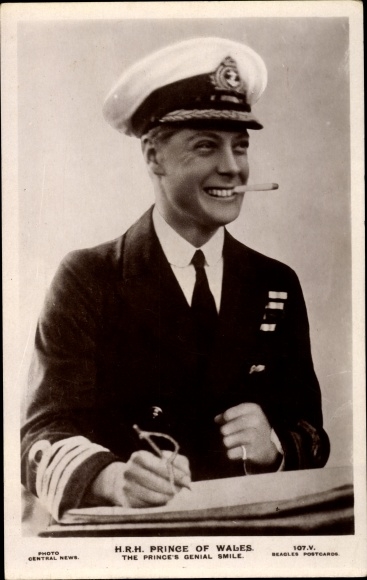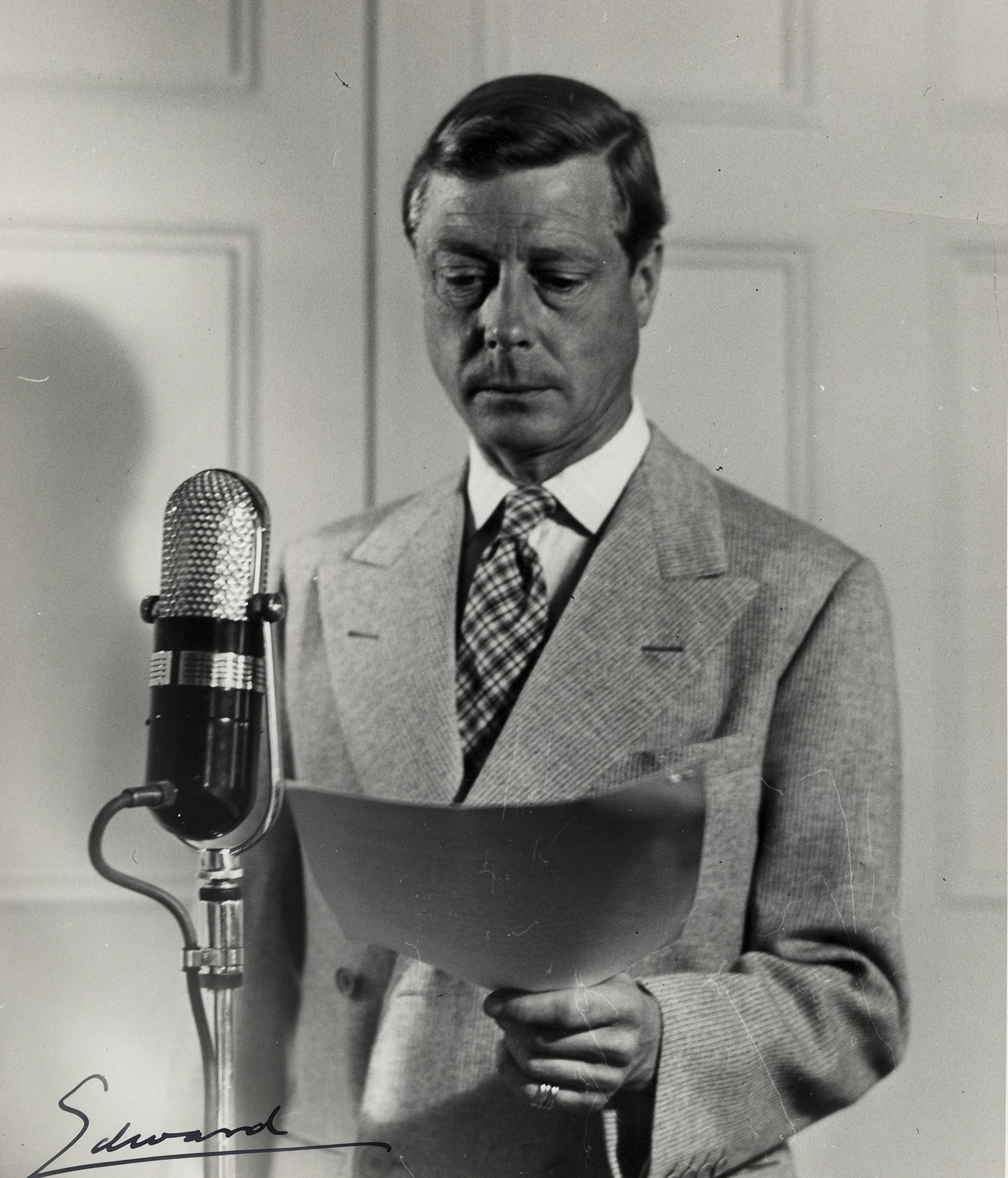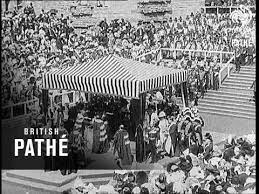Author Guest Post: Adrian Phillips
The last conflict between a British monarch and the government, but one fought over a new media battlefield
The abdication and its aftermath were anything but the first time that the British monarchy has found itself struggling to defend its public image. By previous standards the criticism that the institution faced was decidedly gentle. Nothing compares with the savagery with which it was treated by the cartoonists of the late eighteenth and early nineteenth century, such as Gillray. George IV’s attempts to bludgeon parliament into divorcing his wife on the grounds of adultery were every bit as sordid and publicly divisive as any more recent scandals. The century of peace and low-key deferential press treatment ushered in by the accession of Queen Victoria in 1837 feels like a reaction to these excesses rather than a permanent change in which the British monarchy acquired the reverential status enjoyed by its equivalents in Japan or Thailand.
During this hundred years peace (or truce) the media landscape changed out of all recognition and the shape of open comment or criticism to which the royal family could be exposed and the forces that drove it were unlike anything that the Hanoverians or their predecessors had faced. When the abdication crisis broke in 1936 the media had undergone its own industrial revolution. It had both grown vastly in size and added entirely new technologies: radio, photography and film. Media had become a mass, nationally organized phenomenon, mainly in the hands of commercial businesses, who were interested in profit and not in shaping opinions. Just as industrialization and technology meant that the First World War was utterly different to the Napoleonic wars, so the new world of media increased the scale of the risks with which the country and the Empire were confronted. Everyone in Britain was a consumer and a voter, treated accordingly by companies and politicians respectively. Public opinion had displaced “the mob”.

The abdication crisis was both an end and a beginning. It was the last all-out conflict between monarch and government in British history but both sides were fighting on practically a new battlefield. King Edward VIII should have had the advantage of familiarity from extensive peacetime exercise over this new terrain since his early manhood. He had become one of the best known people on the planet. The illustrated papers, cigarette cards and newsreels had ensured that his handsome face was well known to tens of millions of people. He was not entirely blind to the dangers lurking in contact with the press, but like so many celebrities then and afterwards he did not appreciate just how fragile his status was. Worse, he imagined that his public popularity gave him the power to claw back real influence over public policy for the monarchy that had been steadily eroded over the previous three centuries. Believing that he could force the government to accept a controversial choice of queen was part-and-parcel of his constitutional ambitions. He overestimated the strength of his popularity so much that he was deeply shocked when his impulsive schemes unwound. The newspapers let Edward down and for the rest of his life he felt cheated of the chance to put public opinion to the test. His opponent in the crisis, prime minister, Stanley Baldwin believed he knew far better what the mass of people in Britain were thinking and he was certain that he had public opinion on his side. Baldwin knew that it would cause immense division and even greater hurt than Edward’s abdication on its own if the question had been debated openly.
Edward found that the power of the press cut in more ways than the happy experiences of his youth had prepared him for. He was in a bewildering and complex jungle of ferocious and competing instincts and not a simple games field where his natural advantages had made him a star player. He had three powerful allies amongst the newspaper proprietors but none of them could turn the scales in his favour. William Randolph Hearst, soon to be the model for Orson Welles’s Citizen Kane, counted for little in Britain where the government had the upper hand in the intelligence battle. Esmond Harmsworth of the Daily Mail group wildly over-played a weak hand and was crushed by prime minister Baldwin, a far more astute political operator. Lord Beaverbrook failed to reconcile his own personal political agenda with the King’s instincts.
When the British press broke its long and unnatural silence over Edward’s affair with Mrs Simpson, it showed how fickle it could be. Rather than delivering the support on which Edward had counted, most newspapers spontaneously adopted the conservative morality of the government. Edward also had to come to terms with active risks. Mrs Simpson understood only too well what an unfavourable press was capable of and made it very plain to him that he was expected to protect her. Beaverbrook manipulated Edward into terror at the thought that the establishment newspaper The Times was about to unleash a campaign against him.

When he was let down by the newspapers Edward still nursed hopes that he could play the popularity card to the public through another medium, but here he was on an uneven field. Radio was under the firm control of the government and it could use established constitutional rules to block him as king. When he abdicated the constitutional rule no longer applied but all he could do then was explain why he had stepped down, rather than making the case why he should not step down. The government responded by steering the Archbishop of Canterbury into making a radio broadcast that criticised the ex-king and his circle savagely.

Cinema newsreels had played their part in building Edward’s status as a celebrity monarch and the delusive self-confidence that it brought, but they were not involved in the abdication crisis when it occurred or its aftermath. Partly this was because of the still limited technology and partly, more important, because they shared the instinctive conservatism of most of the newspapers. The newsreel makers read public sentiment as being hostile to the Duke and Duchess of Windsor and they did not want to run the risk of appearing to support them with publicity. The self-imposed blackout on the ex-king was only lifted when he could be incorporated (spuriously) into a patriotic wartime propaganda narrative.
Like Chekhov’s proverbial rifle, the media had been an ominous presence on stage from the first act of the abdication play. Leading actors had fingered it tentatively, but only in the last scenes was it used to fire a couple of shots that injured no-one. In the aftermath some of the interested parties, above all the now Duke of Windsor, took to print enthusiastically to put their sides of the story. In his case at least the new economics of media meant he would earn a lot of money from this. Today’s drearily familiar apparatus of using unacknowledged literary proxies was deployed in full.
The sudden breach triggered by the abdication in the press’s long discretion over the monarchy marked a watershed between an older world and the world of today’s media, but it had been a long time in the making. The abdication was the greatest crisis that the British monarchy had faced in three centuries but it rode out the immediate existential challenge. The Second World War gave it a breathing space in which older standards and practices held sway, but the monarchy could not escape entirely as social habits and customs underwent radical change afterwards. The final nail in the coffin was the determination of many of the leading actors in their drama to work the residue of bitterness left by the crisis by airing their own truths publicly.

Order your copy of The First Royal Media War here.

